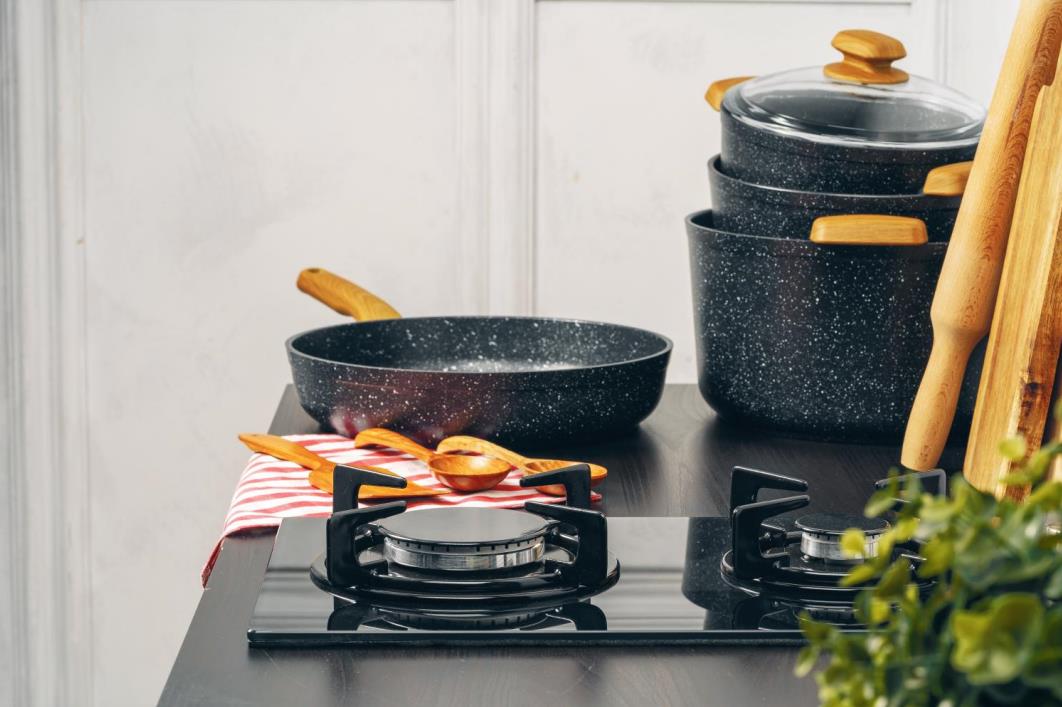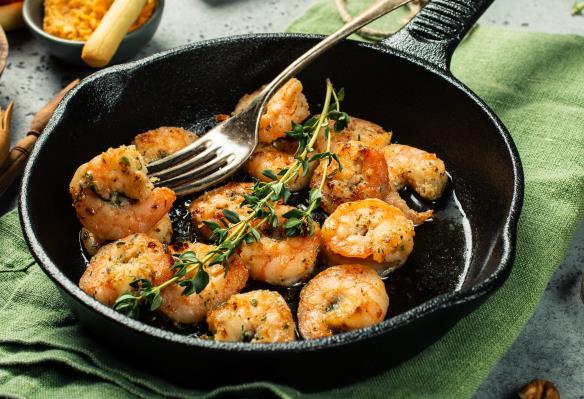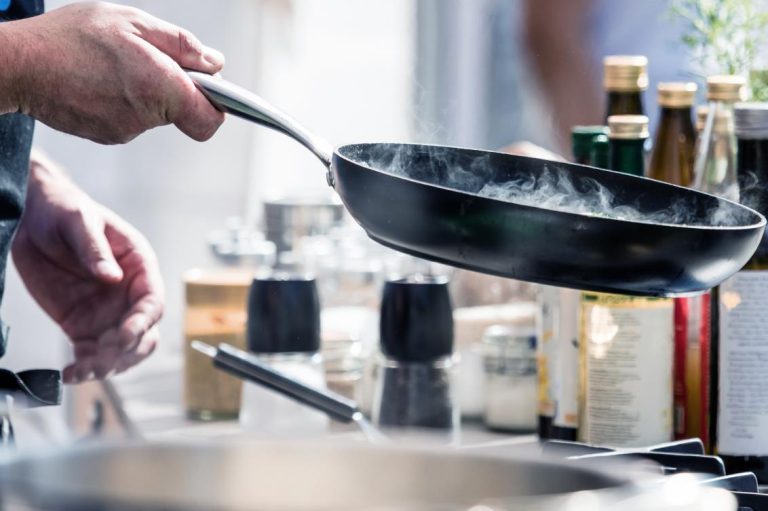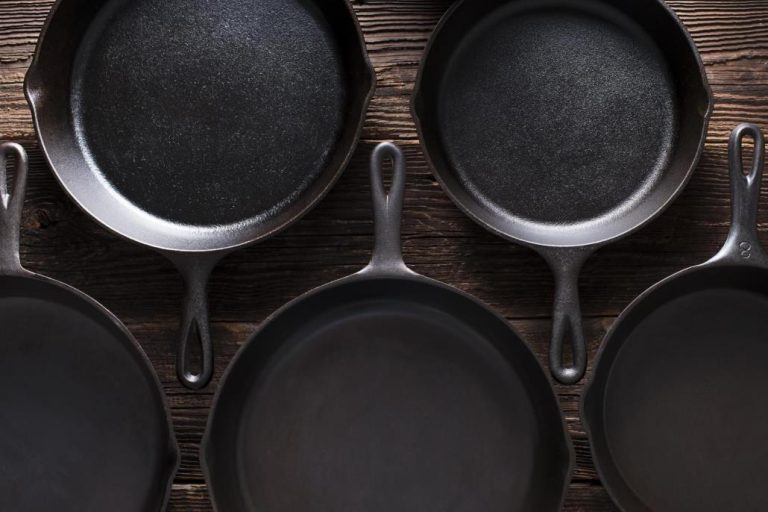Gas stoves produce an open flame that cooks and adjusts the heat with the twist of a knob. Any cookware, regardless of the material, works on gas stovetops. However, they are not all suited for this heating method.
Some cookware materials work better than others on gas stovetops. These are largely due to the material’s heating properties.
In this article, we will guide you toward the best cookware materials for gas stoves. Read to the end to discover why they make the best cookware for gas stovetops to conclude the right choice for your customers utilizing this type of cooktop.
What is a gas stove?
Gas stoves have been the leading cooktop choice for nearly a century since the early 1900s. Whether the stove burns propane (LPG) or natural gas, they work the same and output similar heat, reaching about 3,500ºF.
The fuel source doesn’t impact the cookware’s performance on gas stovetops. They heat the cookware the same regardless of the fuel it uses. One difference that can affect the cookware is the type of burner the stove utilizes – open or sealed.
Open burners give more room for oxygen to pass freely, generating a higher heat. This can be a consideration for those who cook endlessly, as the cookware’s ability to withstand high heat needs questioning.
Sealed burners output heat with their airtight seal around the gas outlet. As a result, there is less direct flame, which makes it safer than an open burner. Sealed burners are rather new and more for home cooks than professionals.
Nonetheless, the burner type doesn’t make a big difference for the ideal cookware materials we will list in this article for gas stoves. Everything discussed in this guide applies to all gas stovetops.
Before diving right into the best cookware materials, let’s clear up how electric and induction cooktops compare to gas stoves.
Gas stove vs. electric/induction cooktop
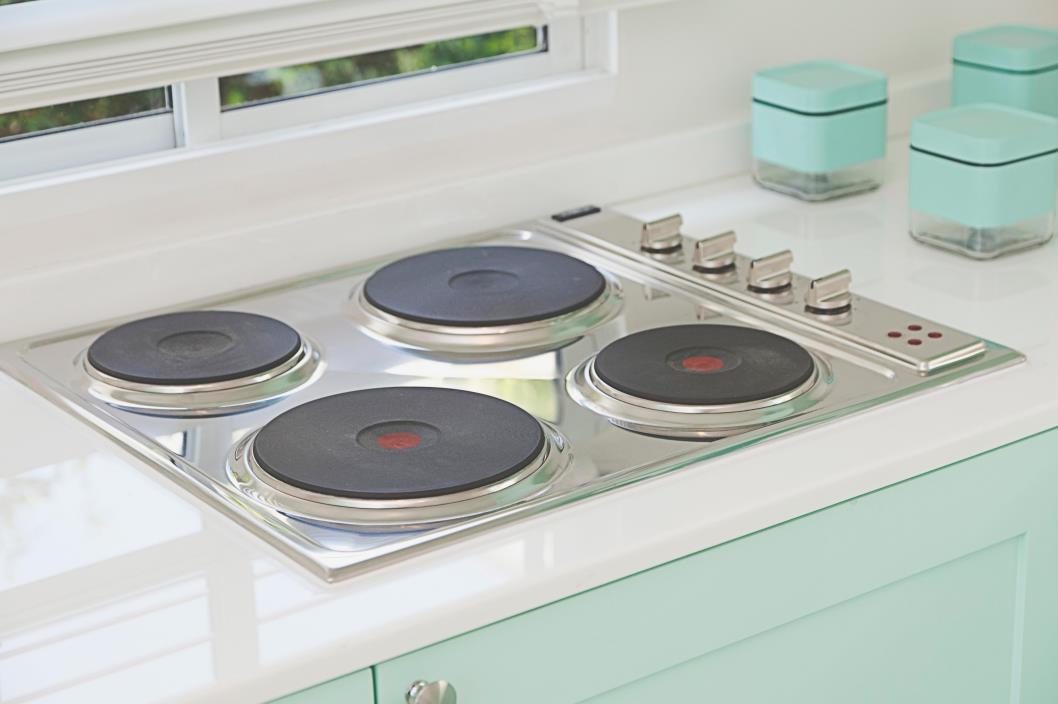
Gas and electric stovetops are two popular choices for home cooks. Gas stoves are a favorite for their ability to increase and decrease the heat instantly. Conventional electric stovetops employ metal heating that has a dry, even heat throughout. They don’t have the instantaneous temperature control gas stoves offer, as metal can’t cool off immediately.
There are also induction stovetops that offer similar properties as gas and electric stovetops. Induction stovetops essentially transform the cookware into its own source of heat through magnetic induction. They are more energy-efficient than both gas and electric stoves but costlier.
If the cookware products you already sell are compatible with induction stovetops, they will work with gas stovetops. However, the other way around doesn’t always apply. Even not all stainless steel cookware works with induction cooking. It depends on the type of steel used.
Buy Wholesale Cookware and Start Scaling up with Us Today
Contact us and connect with a sales rep to get a free quote.
What to look for in cookware material for a gas stove?
The ideal cookware material for gas stoves should have:
- Good thermal conductivity to spread the stove’s center-focused flame evenly to the sides. Otherwise, it will cook foods in the center while undercooking the rest, or overcook the center, and so on.
- Durability to withstand high heat. Considering a gas stove can reach over 3,000ºF, it must be able to resist high temperatures required for browning and searing.
- Proper shock resistance to prevent warping, cracking, shattering, and other damages.
- Enough stability to prevent damages when going from maximum to simmer, or vice versa.
With these in mind, the cookware material we look for should have balanced thermal conductivity. It needs to transfer heat evenly throughout the surface without heating the handle excessively. Furthermore, it must withstand sudden temperature changes that can cause warping and discoloration.
Best cookware materials for gas stove
Here’s an overview of the cookware materials that are just perfect for gas stovetops. Each material has unique heating properties that affect the user’s cooking experience. Based on the explanation of how each cookware material performs using a gas stovetop, you can find the best one(s) for their clientele.
Cast iron
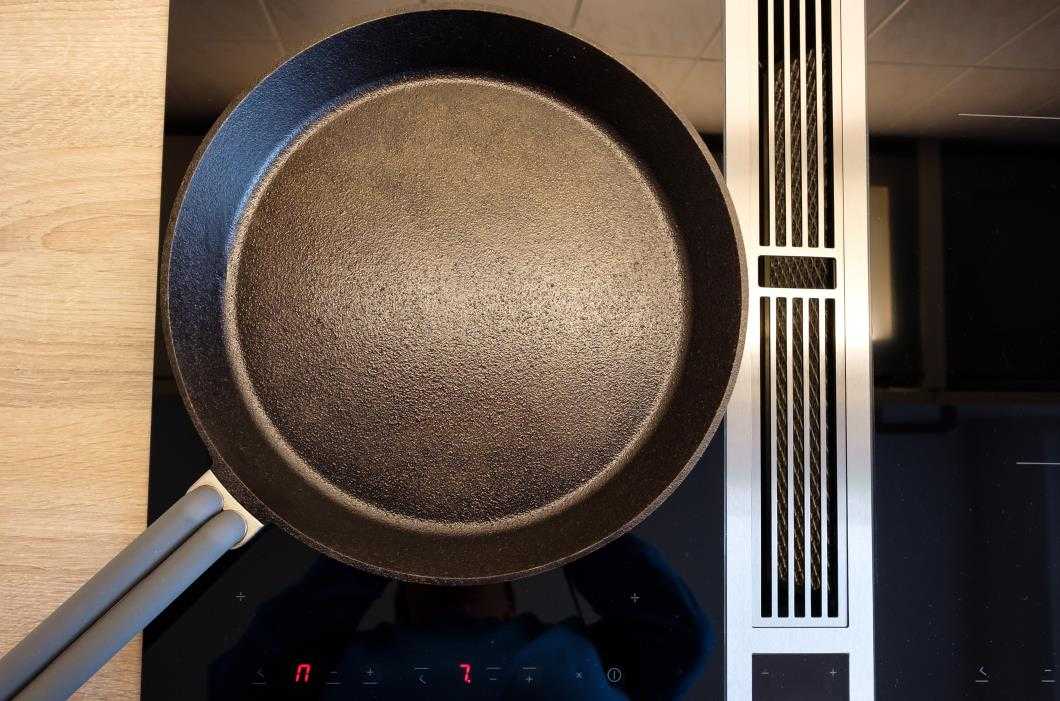
Who doesn’t love an aged cast iron skillet? Cast iron cookware, especially skillets and pans, has been the go-to choice of cooks for centuries. They are durable, retain heat incredibly well, and come in many shapes and sizes.
Cast iron works perfectly on gas stoves. Although it takes some time to get hot, it will hold onto the heat once it’s there. Even after turning the heat off, it continues to cook and brown for several minutes. This level of heat retention even makes them ideal for use in the oven.
The disadvantage to cast iron is its poor heat conductivity. The time cast iron takes to get hot over a gas stove can be bothersome to cooks. It isn’t the best cookware choice to scramble a few eggs in the middle of the night. Cast iron also heats up unevenly. Therefore, it requires time not only to get hot but also to have an appropriate cooking surface.
Despite these downsides, cast iron is a favorite among cooks for its ability to retain and withstand high heat. It is an undoubted pick for searing meat and cooking at a steady temperature with its seasoned, non-stick surface.
Pros and cons of cast iron for gas stoves
- Pro: Perfect for open and sealed burners
- Pro: One of the best heat retention
- Con: Takes time to get hot
- Con: Heats unevenly
Enameled cast iron
Enameled cast iron is the same as bare cast iron but with a ceramic coating on the surface. This makes the surface somewhat non-stick and corrosion-resistant without seasoning.
Many of the things mentioned above also apply to enameled cast iron. However, the enamel coating affects how the cast iron heats, especially on gas stovetops. Cast iron is a poor conductor of heat, and the enamel coating doesn’t help either. It makes cast iron even less heat conductive, requiring the cookware extra time to heat up.
In particular with gas stoves, an enameled cast iron pot’s surface will heat up faster than the rest. The sides will take more time to heat. These make enameled cast iron better suited for cooking at steady temperatures for stews, braising, and soups. The reduced heat conductivity is why manufacturers mostly use this cookware material for deep pots, like the Le Creuset products, and wok-style pans.
Enameled cast iron can be the perfect cookware material for customers that find cast iron’s upkeep needs too demanding.
Pros and cons of enameled cast iron for gas stoves
- Pro: Semi non-stick surface that doesn’t require seasoning
- Pro: Excellent heat retention
- Con: Poor heat conductivity – the center-focused flame of gas stoves takes time to heat the sides
- Con: Expensive
Clad stainless steel
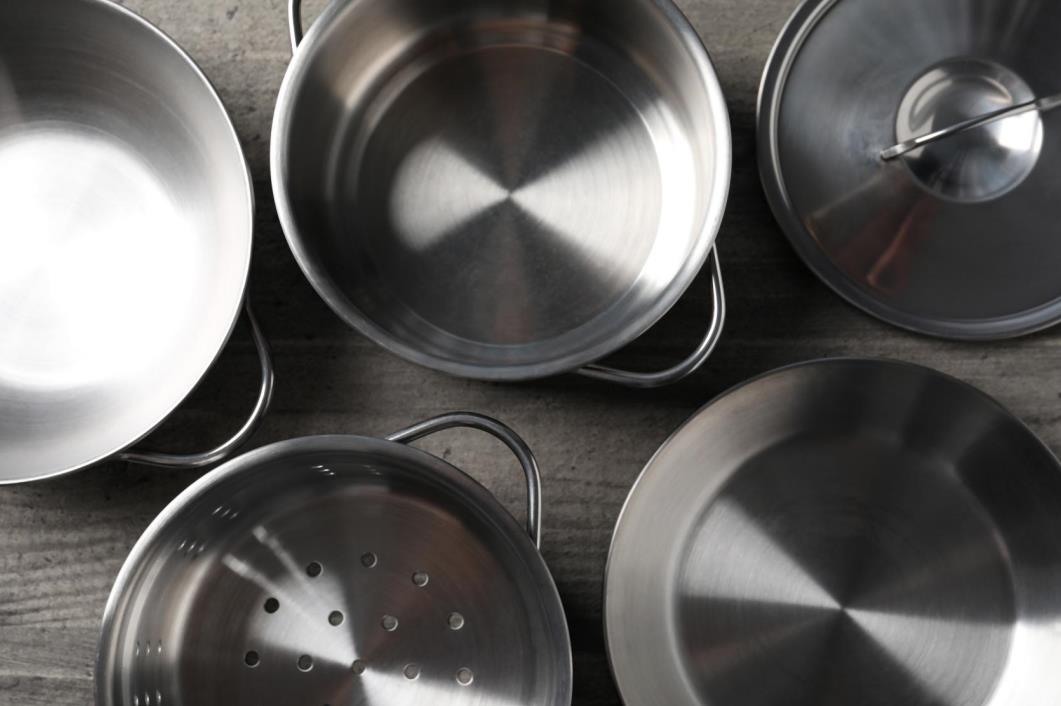
Stainless steel cookware is durable, shiny, corrosion-resistant, and non-reactive. One variety, cladded stainless steel, adds to these benefits, making it one of the best cookware materials for gas stoves.
Clad stainless steel cookware can have three or five pliers with an aluminum or copper core. The aluminum and copper provide better thermal conductivity, allowing faster heat times. Clad stainless steel can’t keep a hot surface as good as cast iron, but it heats evenly.
These features make clad stainless steel ideal for all-purpose use. Clad stainless steel cookware should be a strong candidate for all stores aiming to sell cookware for gas stoves.
Pros and cons of clad stainless steel for gas stoves
- Pro: Heats evenly and quickly
- Pro: Ideal for all heat levels, from low to high
- Con: Preheating it over a burner for too long leads to discoloration
- Con: Using metal utensils or steel wool to clean can damage the exterior
Carbon steel
Carbon steel is similar to cast iron but is much thinner and has a varying look. It has a dull shine with a blue hue. Over time, it darkens in color, becoming more even. Cookware manufacturers use carbon steel mainly for pans and skillets. It is rare to come across whole sets with pots.
Carbon steel pans and skillets can do pretty much anything cast iron does, but they can’t retain heat as well over a gas stove. Nevertheless, it is ideal for high-heat searing. Carbon steel is a practical alternative for cooks that favor cast iron but find it heavy. Since carbon steel is lighter, cooks can pan-flip with ease without using utensils over a gas stovetop.
These benefits also come with a few downsides. Carbon steel heats unevenly and tends to be slow. There can be hotspots that will lead to sticking foods or cooking them unevenly. Cooks should preheat carbon steel pans and skillets over medium heat for a few minutes before adding anything. Luckily, heating it empty won’t have any adverse effects.
Pros and cons of carbon steel for gas stoves
- Pro: Good heat retention
- Pro: Becomes more non-stick with use
- Con: Heats unevenly
- Con: Discoloration occurs over time
Copper
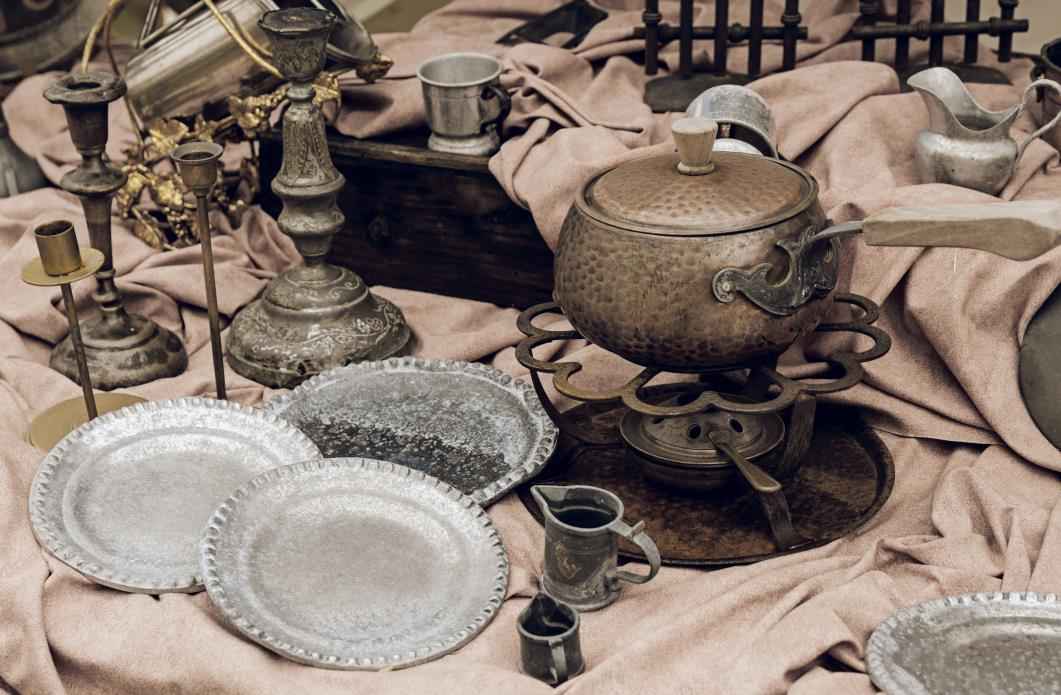
Copper cookware sets have been prized for their quick, even heating. As it is one of the most heat-conductive materials, copper works exceptionally well on gas stoves.
Even over medium-low heat, copper cookware gets hot quickly and can be utilized for various cooking methods. It can’t retain heat well, but the copper’s reactiveness to heat allows cooks to control the temperature precisely. Copper cookware is often hammered to reduce hotspots that can happen due to absorbing too much heat.
As it is highly reactive, copper doesn’t make the best cooking surface. Copper pots and pans usually have a stainless steel exterior. Some varieties also have a ceramic coating that is partially non-stick.
Overall, copper pots and pans are perfect for gas stoves with their even and quick heat distribution and durability but are very costly. They also require polishing two to three times a year. These make copper cookware catered more to serious cooks or professional chefs working at fast-paced restaurants.
Pros and cons of copper cookware for gas stoves
- Pro: Supreme reactiveness to heat
- Pro: Even heat distribution
- Con: Susceptible to overheating issues
- Con: Can’t retain heat well
Aluminum
Similar to copper, aluminum is an excellent heat conductor. Although it is primarily used in clad stainless steel cookware as a core material, aluminum can be just as good for gas stovetops. Aluminum cookware has anodized and non-anodized varieties that offer different features.
Anodized aluminum is treated, whereas non-anodized aluminum cookware’s surface is aluminum, but some have a non-stick coating. Anodized aluminum adds a seal around the metal’s exterior. The seal is non-stick and prevents the metal from leaching into the food. Although aluminum causing Alzheimer’s disease has been debunked, anodized aluminum can help mitigate the worries around this issue.
Overall, aluminum skillets and pans have good conductivity and distribute heat evenly with median retention. It can be a good choice for cooks that want a convenient skillet that’s easier to clean and utilize than cast iron or carbon steel.
Pros and cons of aluminum cookware for gas stoves
- Pro: Heats quickly and evenly
- Pro: Can be used at all heat levels
- Con: Not the most durable
- Con: Heat retention isn’t the greatest
Buy Wholesale Cookware and Start Scaling up with Us Today
Contact us and connect with a sales rep to get a free quote.
Cookware materials to avoid for gas stove

The cookware materials listed above can benefit cooks in a variety of ways. Some have excellent heat conductivity that provides a hot cooking surface in a matter of seconds; some hold onto heat for browning and searing. Others are balanced with a good degree of everything.
While these cookware materials can assist users in daily cooking and special occasions, some are just not fit for gas stoves. Here are some of the cookware materials to avoid for gas stoves.
Non-stick
Non-stick pots and pans aren’t the best for gas stovetops for several reasons. Many have safety issues. PTFE (Teflon) pans release toxic chemicals when heated above 572ºF that can lead to polymer fume fever. This causes flu-like symptoms that arise within four to eight hours after exposure.
Since gas stovetops can heat pans much higher than 572ºF, non-stick cookware isn’t ideal for use over gas stovetops. Assuming safety and stability are major considerations for your customers, it is best to avoid non-stick cookware altogether.
Glassware
Most glassware is a big no for gas stoves due to poor shock resistance that can result in cracks or shatters that can be explosive. Glassware made from borosilicate glass tends to be shock-resistant, but not all are safe for gas stoves.
Technically, the open flame can’t damage borosilicate glass but won’t provide the best cooking experience either. Glassware conducts heat poorly and doesn’t provide an appropriate cooking surface. It also isn’t the easiest to move around. They are best utilized for baking purposes.
Stoneware
Stoneware is notorious for its ability to retain heat efficiently. However, it takes just as long to heat up. Stoneware distributes heat equally in the oven, but over a gas stovetop, it has trouble getting hot. Furthermore, stoneware won’t distribute heat evenly on the stove. Like glassware, it is best to leave them for baking.
Ceramic
Ceramic cookware upholds similar features as stoneware. It keeps a hot surface for long but takes patience to heat up. It is like cast iron but is much more fragile. Ceramic cookware can chip following use with metal utensils or after repeated contact with stove grates. The surface also isn’t hard-wearing. The high heat from the open flame of a gas stove will degrade ceramic over time, becoming uneven and losing its properties.
Conclusion: Which cookware material is best for gas stoves?
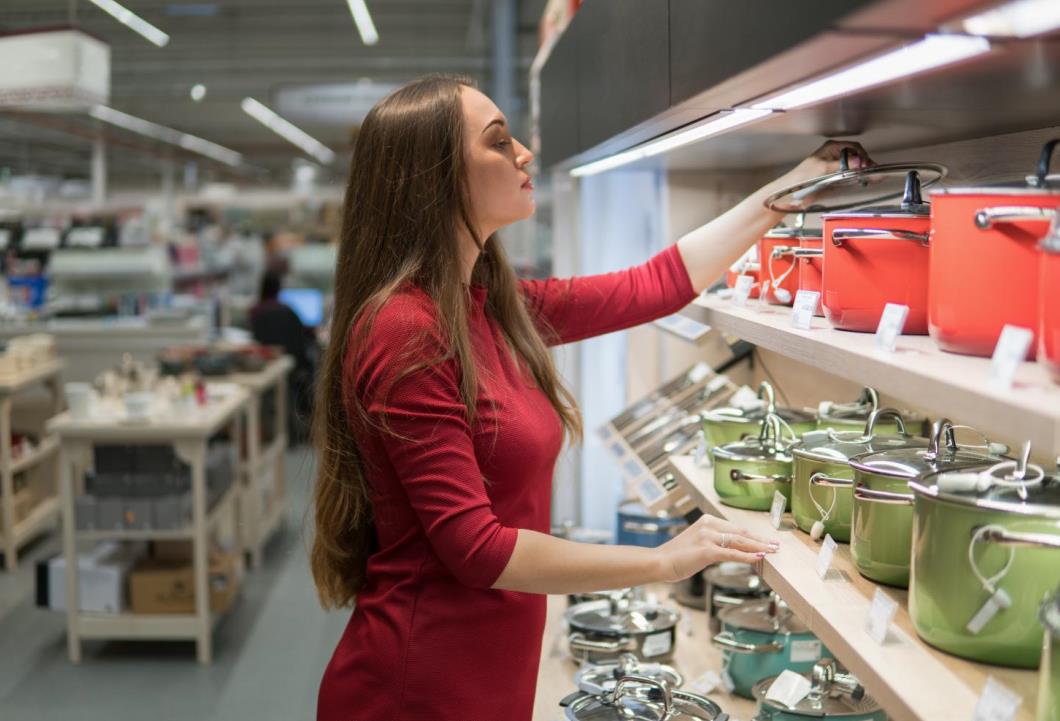
The list of the materials suitable for gas stoves looks much like our best cookware materials article.
Clad stainless steel, aluminum, and enameled cast iron are perfect with their qualities for all-purpose, day-to-day use. These cookware materials are easy to maintain, provide a non-stick or semi-non-stick cooking surface, and last long.
Cast iron and carbon steel skillets can also work wonders in the kitchen if your customers are up for some upkeep and seasoning. They retain heat efficiently and are the best choice for high heat searing. There aren’t as many pots made from these two, but enameled cast iron Dutch ovens can provide the heat retention cooks need for stews and soups.
From cooking sauces to frying chicken, the best cookware material for a gas stove largely depends on user preferences. As with many other kitchen products, these are often on a personal level with cooks. The dishes they prepare, how they like them to be cooked, their experience in the kitchen, and other small details determine the right product choice.
Nonetheless, no store can go wrong with cast iron, clad stainless steel, and aluminum cookware. These provide the essentials every cook needs in the kitchen for gas stove use.
Final words
LeeKnives is a leading manufacturer of kitchen products. We can help you source a variety of wholesale kitchen products – directly from the manufacturer. Request a quote to learn more about our wholesale, OEM, private label, and IP protection services.
